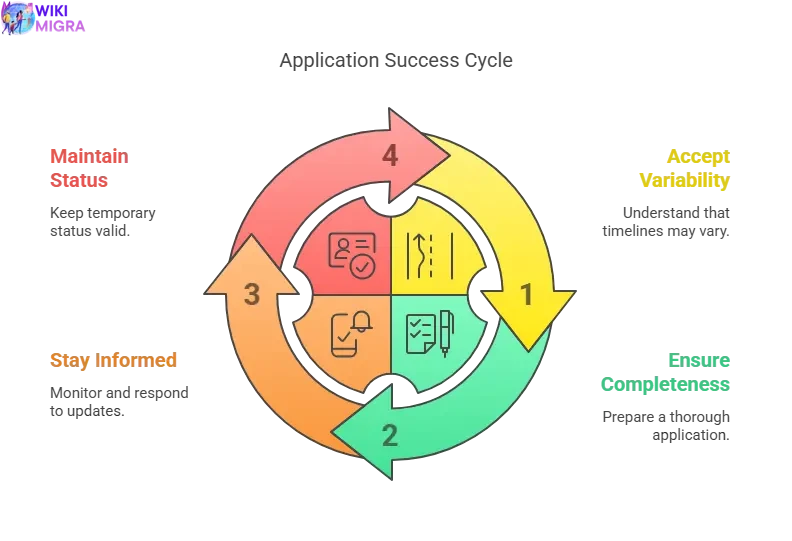Inland Spousal Sponsorship Canada Timeline: Your Complete [2025] Guide

Table of Contents
Navigating the Canadian immigration system can feel like charting unknown waters, especially when it involves reuniting with your loved one. If you’re sponsoring your spouse or partner from within Canada, the biggest question looming is often: “How long does inland spousal sponsorship take?” The anxiety surrounding the inland spousal sponsorship Canada timeline is completely understandable. You’re eager to move forward with your lives together, and the uncertainty of waiting can be incredibly stressful.
At Immigration Gateway, we specialize in guiding couples through this very process. We understand the emotional weight of the wait and the need for clear, reliable information. This guide aims to provide you with the most comprehensive and up-to-date picture possible of the Canada spouse visa timeline inside Canada.
While Immigration, Refugees and Citizenship Canada (IRCC) provides an official average processing time (which we’ll discuss), it’s crucial to remember that this is an estimate. Your specific journey might be shorter or longer. This post will break down the typical stages, explore the factors that influence your individual IRCC processing time spousal sponsorship inland, show you how to track your inland sponsorship application, and offer tips for a smoother experience.
Our commitment is to provide accurate, actionable information based on official sources and extensive experience, empowering you with the knowledge you need during this important time (E-E-A-T). Let’s demystify the timeline together.
You may be interested in: Family Sponsorship Immigration Canada Last update in 2025
What is the Official Average Inland Spousal Sponsorship Processing Time?
Let’s get straight to the number everyone wants to see. IRCC publishes average processing times based on historical data.
Official IRCC Average Processing Time for Inland Spousal Sponsorship:
As of our last check, the average processing time is approximately [Insert Current Official Average Months Here – e.g., 10-12 months].
CRUCIAL: This is an average and subject to change. Always check the most current official processing time directly on the IRCC website:
➡️ [Link to the Official IRCC Processing Time Tool Here] ⬅️
How IRCC Calculates This Time:
It’s important to understand what this “average” means. IRCC typically calculates this based on how long it took to process 80% of applications in the recent past. This means 20% of applications took longer than the stated average. The calculation usually starts from the date IRCC receives a complete application and ends when a final decision is made.
Understanding the Stages: A Timeline Breakdown
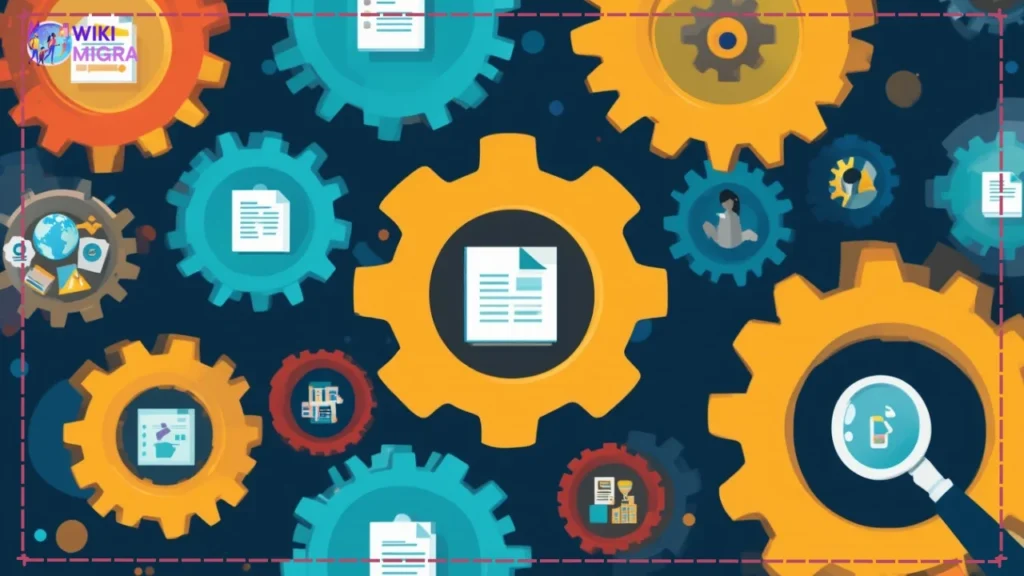
The inland spousal sponsorship process isn’t just one long waiting period; it’s a series of steps and checks performed by IRCC. Understanding these stages can make the inland spousal sponsorship Canada timeline feel less like a black box.
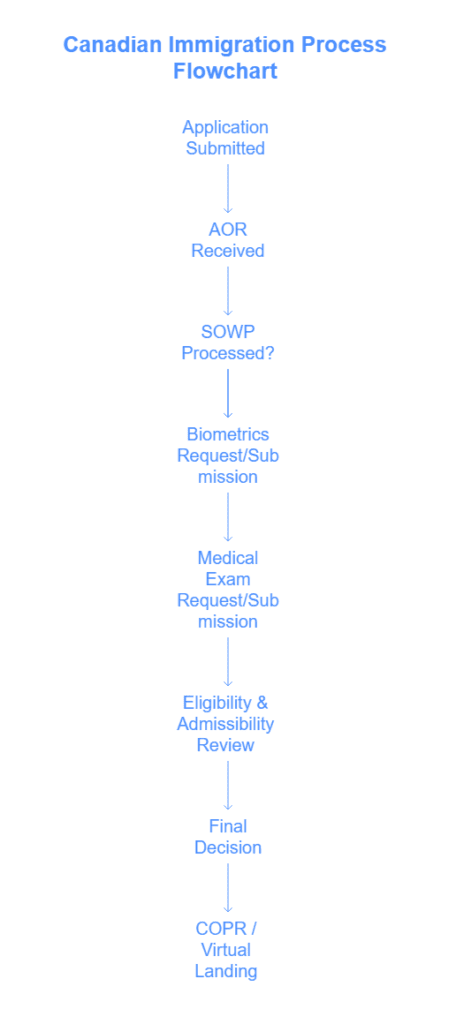
Let’s break down each key stage:
Stage 1: Application Submission & Acknowledgment of Receipt (AOR)
- What it is: You’ve meticulously prepared and submitted your comprehensive application package (either online via the Permanent Residence Portal or, in rare cases, by mail).
- What happens next: IRCC receives the package and performs an initial check to ensure it’s complete (all required forms signed, fees paid, essential documents included).
- The Milestone: AOR: If deemed complete, IRCC will issue an Acknowledgment of Receipt (AOR). This confirms your application has been formally accepted into the processing queue and provides you with your unique application number (UCI if you don’t have one already).
- Typical Timeframe for AOR: This usually takes 1-3 months from the date IRCC receives your application. Delays can occur if the application is initially deemed incomplete.
- What AOR Signifies: It means processing has officially begun. It doesn’t mean your application is approved, only that it’s in the system.
Stage 2: Open Work Permit (SOWP) Processing (If Applicable)
- What it is: One of the significant advantages of the inland process is that the sponsored spouse or partner, if they have valid temporary resident status in Canada, can often apply for a Spousal Open Work Permit (SOWP) at the same time as the sponsorship application.
- Impact on the Wait: Receiving an SOWP significantly improves the waiting experience. It allows the applicant to work legally for any employer in Canada while the PR application is processing, reducing financial strain and aiding integration.
- SOWP Timeline: If you apply for the SOWP concurrently with the sponsorship application, IRCC generally aims to process the SOWP after the AOR on the main sponsorship application is issued. The typical processing time for the SOWP itself (after AOR on the PR file) can range from 3-6 months, but this is highly variable and depends on IRCC workload. Check SOWP specific processing times on the IRCC tool as well.
- Important Note: You must maintain legal temporary status in Canada (e.g., visitor record, study permit, existing work permit) until the SOWP is approved and issued.
Stage 3: Biometrics Collection
- What it is: Most applicants for permanent residence need to provide biometrics (fingerprints and a photograph).
- The Process: After the AOR stage, usually within a few weeks to a couple of months, IRCC will issue a Biometrics Instruction Letter (BIL). You’ll need this letter to book an appointment at a designated Service Canada location.
- Timeline:
- Receiving BIL: Typically 1-2 months after AOR.
- Booking & Attending Appointment: Appointment availability varies by location. Aim to book and attend as soon as possible after receiving the BIL.
- Submission Confirmation: Service Canada transmits the biometrics to IRCC electronically, usually within a few days.
- Impact: Processing generally cannot proceed past certain points until valid biometrics are on file.
Stage 4: Medical Examination
- What it is: All applicants for permanent residence must undergo an Immigration Medical Exam (IME) performed by an IRCC-approved Panel Physician. This screens for health conditions that could pose a risk to public health or safety, or place excessive demand on Canada’s health or social services.
- Timing Options:
- Upfront Medical: You can choose to complete the medical exam before submitting your application. Include the information sheet provided by the Panel Physician with your submission. Pros: Can potentially save time later. Cons: Cost upfront, exam results expire after 12 months (risk if processing takes longer).
- Wait for Request: If you don’t do an upfront medical, IRCC will send a Medical Instruction Letter (MIL) requesting you complete the exam. This usually happens sometime after the AOR stage, often around the same time or after the biometrics request.
- Timeline (If Waiting for Request):
- Receiving MIL: Varies, but often 2-6 months after AOR.
- Completing Exam & Submission: You typically have 30 days from receiving the MIL to complete the exam. The Panel Physician submits the results directly to IRCC electronically. This can take a few weeks to reflect in the system.
Stage 5: Eligibility & Admissibility Review
- The Core of Processing: This is generally the longest and most complex stage of the inland spousal sponsorship Canada timeline. IRCC officers meticulously review your entire application.
- What IRCC Reviews:
- Sponsor Eligibility: Is the sponsor eligible to sponsor (Canadian citizen/PR, residing in Canada, meets financial requirements – though the LICO threshold is generally not applied strictly for spouses/partners unless they have dependent children with dependent children of their own, not prohibited from sponsoring)?
- Applicant Eligibility: Is the sponsored person actually a spouse, common-law partner, or conjugal partner as defined by Canadian law? Is the relationship genuine and not entered into primarily for immigration purposes? This involves scrutinizing relationship evidence (photos, communication logs, joint documents, letters of support).
- Admissibility: Is the applicant admissible to Canada? This involves checks for:
- Security: Background checks, ensuring the applicant doesn’t pose a security risk.
- Criminality: Checks for past criminal convictions inside or outside Canada.
- Medical: Reviewing the results of the IME.
- Misrepresentation: Ensuring all information provided is truthful and accurate.
- Financial: Ensuring the applicant is unlikely to require social assistance (usually satisfied by the sponsor’s undertaking).
- Timeline: This stage is highly variable and is where most of the “average processing time” occurs. It can take many months (e.g., 6-10+ months). It’s often the “black box” stage where updates might seem infrequent. Factors like case complexity, country of citizenship (for background checks), and visa office workload heavily influence this phase. IRCC may also request additional documents or schedule an interview during this stage, adding to the timeline.
Stage 6: Final Decision & Confirmation of PR (COPR)
- The Finish Line Approaches: Once the eligibility and admissibility reviews are complete and positive, a final decision is made.
- Approval Notification: You’ll typically see an update in your online account indicating “Final Decision Made” or “Approved.”
- Portal Emails & COPR: For inland applicants, the final steps usually involve receiving emails for the “Permanent Residence Portal” (different from the initial application portal). You’ll use this portal to declare you are in Canada, provide an address for your PR card, and upload a photo. Once confirmed, you’ll receive your electronic Confirmation of Permanent Residence (eCOPR) document through this portal.
- Timeline: From the point the online status shows processing is complete or a final decision is made, receiving the first Portal email can take a few days to several weeks. Completing the portal steps and receiving the eCOPR usually happens within 1-4 weeks after the initial portal email, assuming you respond promptly.
- What Happens Next: The eCOPR confirms your permanent resident status! You are officially a PR of Canada. The physical PR card will be mailed to the address you provided, which can take several more weeks or months. The eCOPR is your proof of status in the meantime. Some applicants might still be called for a brief virtual landing interview, but the portal process is now standard for most inland cases.
Key Factors That Influence Your Specific Timeline (Why It Varies)
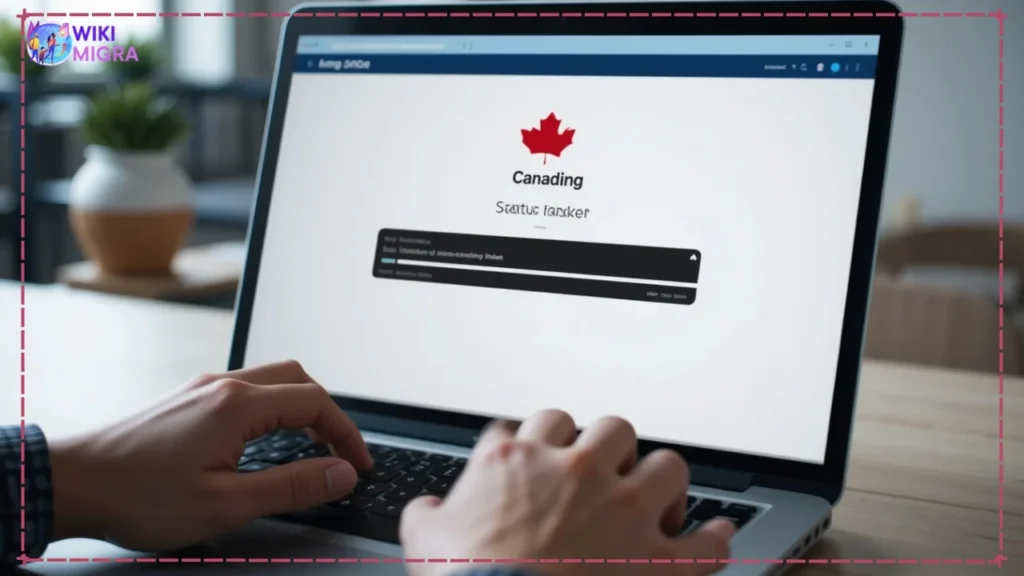
Understanding the average spouse visa timeline inside Canada is helpful, but knowing what impacts your application specifically is crucial. Here’s why timelines differ so much:
Application Completeness & Quality
- Impact: HUGE. An incomplete application (missing forms, signatures, fees, crucial documents like passports or status documents, poor quality translations) won’t even enter processing until corrected. It will be returned, causing significant delays (months). Even minor omissions or unclear information discovered later can lead to requests for clarification, pausing your application.
- Mitigation: Triple-check everything against the specific document checklist for your situation before submitting. Ensure all forms are fully completed and signed correctly.
Case Complexity
- Impact: Non-straightforward cases naturally take longer for officers to assess.
- Examples:
- Previous Refusals: Any prior visa or immigration refusal needs careful explanation and documentation.
- Admissibility Issues: Medical conditions requiring further assessment, any criminal history (even minor or old convictions), previous immigration violations.
- Complex Relationship History: Short relationship duration, significant age gaps, cultural differences requiring more explanation, previous marriages for either partner, dependents involved (especially children from previous relationships).
- Genuineness Concerns: If initial evidence seems weak, IRCC may request more proof or schedule an interview.
- Mitigation: Address potential complexities proactively in your application with clear explanations and strong supporting evidence.
Applicant’s Country of Citizenship (and Residency History)
- Impact: Security and background checks are conducted based on the applicant’s citizenship and countries they’ve lived in for extended periods. Verification processes and timelines can vary significantly depending on the country and Canada’s information-sharing agreements.
- Mitigation: Provide accurate residency history and any required police certificates upfront.
IRCC Visa Office Workload & Priorities
- Impact: Although processed centrally to some extent, application loads and staffing levels at specific IRCC processing centres can fluctuate. Government priorities can also shift resources, impacting processing times for certain application types. This is largely outside your control.
- Mitigation: None directly, other than submitting a solid application early.
Need for Additional Documents or Interview
- Impact: If IRCC requires more information, clarification, or decides an interview is necessary to assess relationship genuineness or admissibility, your application is paused while they wait for your response or schedule the interview. This can add weeks or months to the IRCC processing time spousal sponsorship inland.
- Mitigation: Submit the most complete application possible initially. If requested, respond immediately and thoroughly.
Responding Promptly to IRCC Requests
- Impact: IRCC usually provides deadlines (often 30 days) for responding to requests. Failing to respond on time, or providing an incomplete response, can lead to further delays or even refusal.
- Mitigation: Monitor your email (and spam folder) and your IRCC online account regularly. Respond well before any deadlines.
How to Track Your Inland Spousal Sponsorship Application Status
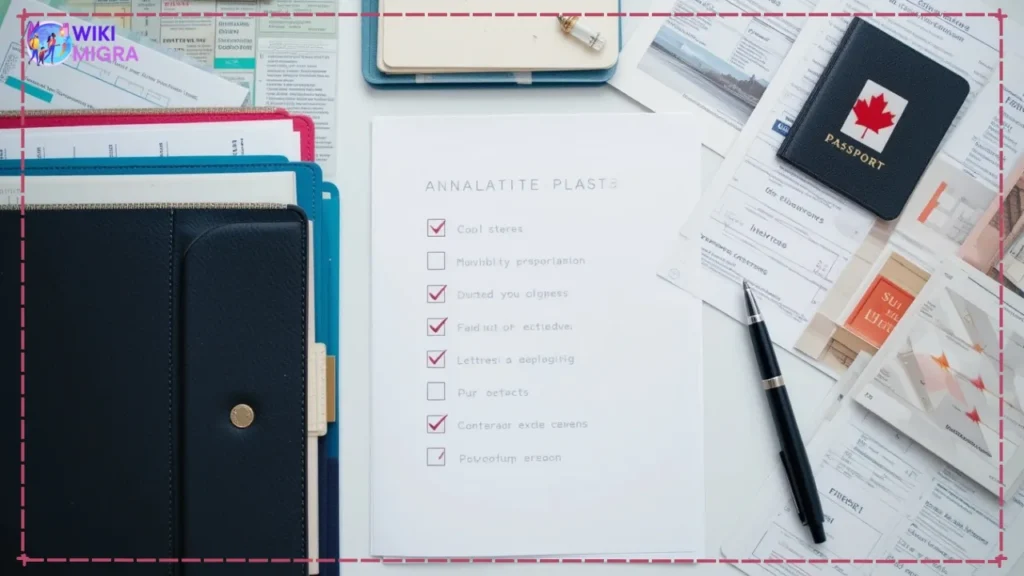
Waiting is tough, but checking your status can provide some reassurance (or at least information). Here’s how to track your inland sponsorship application:
Official IRCC Secure Account / Status Tracker
- How it Works: This is your primary tool. After you link your application to your IRCC Secure Account (using details from your AOR), you can log in to see basic status updates. There are typically two main trackers people use:
- GCKey/Sign-in Partner Account: This shows submitted applications, messages from IRCC, and high-level status updates (e.g., “Submitted,” “Biometrics Completed,” “Medical Exam Passed,” “Background Check In Progress,” “Final Decision”).
- Electronic Application Status Tracker (eCAS/Permanent Residence Application Tracker): Sometimes provides slightly different milestone views. You may need your Application Number, UCI, name, DOB, and place of birth to access it.
- What it Shows (and Doesn’t Show): It shows key milestones achieved but often lacks specific details about what is happening during long stages like the Eligibility/Admissibility review. Updates might not be real-time; sometimes, a step is completed internally weeks before the tracker updates.
- (Generic Screenshot Description): Imagine a screen showing the applicant’s name and application number, with a list of steps like “Review of eligibility,” “Review of medical results,” “Review of additional documents,” “Interview,” “Biometrics,” “Background check,” and “Final decision.” Some steps might have a status like “Not Started,” “In Progress,” or “Completed” with a date.
- Link: [Link to IRCC Secure Account Login page] / [Link to Permanent Residence Application Tracker page]
Using the IRCC Web Form
- When to Use: The Web Form is an online tool for contacting IRCC about your application. It’s generally best used after your application has exceeded the current average processing time, or if you have a specific, urgent query that isn’t answered by the online tracker (e.g., informing them of a critical change in circumstances, like a new passport or change of address if you can’t update it online). Don’t use it for generic “what’s my status?” requests if you are still within normal processing times.
- How to Inquire Effectively: Be concise and clear. Provide your full name, date of birth, UCI, and Application Number. State your question directly. Keep it professional. You’ll receive an automated acknowledgment, and a specific response can take several weeks or even months.
Calling the IRCC Call Centre
- Manage Expectations: You can call IRCC, but be prepared for potentially long wait times. Call centre agents generally have access to the same information shown in your online account. They cannot expedite your application and often cannot provide detailed insights into ongoing reviews unless a specific action is pending on your part. They are most helpful for technical issues with your account or confirming receipt of documents you mailed.
- Tip: Have your UCI and Application Number ready before calling.
Ordering GCMS Notes (Advanced)
- What They Are: Global Case Management System (GCMS) notes are the detailed internal notes kept by IRCC officers working on your file. They can provide much more insight into the status, assessments made, potential concerns, and upcoming steps than the public tracker.
- When They Might Be Useful: Ordering GCMS notes is usually considered if your application is significantly delayed beyond average processing times, if you suspect there might be a complex issue, or after a refusal to understand the reasoning. It’s not typically necessary for straightforward applications proceeding normally.
- How to Order: You or an authorized representative (like a consultant or lawyer) can request these notes under the Access to Information Act or Privacy Act. Processing the request itself takes time (typically 30 days, but can be longer).
- Interpreting Notes: GCMS notes use codes and jargon that can be difficult to understand without experience.
Inland vs. Outland Sponsorship: Timeline Comparison
Couples often wonder if applying inland or outland is faster. There’s no single “faster” route, as both are subject to variability. Here’s a brief comparison focused on timeline-affecting factors:
| Feature | Inland Sponsorship | Outland Sponsorship |
| Typical Avg. Time | Often cited as potentially slightly faster on average (e.g., ~12 months) BUT highly variable. Check current IRCC times. | Can vary more widely depending on the applicant’s country/visa office (e.g., 12-24+ months). Check current IRCC times. |
| Applicant Location | Applicant MUST reside IN Canada with Sponsor. | Applicant can be outside OR inside Canada (on valid temporary status). |
| Work Permit Option | Eligible for Spousal Open Work Permit (SOWP) while processing. | Generally NOT eligible for SOWP based on the outland application alone. |
| Interview Location | If required, usually occurs within Canada. | If required, usually occurs at a visa office outside Canada (can require travel). |
| Implied Status | May benefit from maintained status while SOWP/PR application is processed, if applied before current status expired. | Does not provide status in Canada. Applicant needs separate valid temporary status if inside Canada. |
| Right of Appeal | Generally NO right to appeal a refusal to the Immigration Appeal Division (IAD). Judicial Review is the main recourse. | Sponsor HAS the right to appeal a refusal to the IAD. |
For a deeper dive into the pros and cons beyond just the timeline, check out our detailed article: Inland vs Outland Spousal Sponsorship: The Complete Guide to Choosing Your Path to Canada
Tips for a Smoother (Potentially Faster*) Processing Experience
Disclaimer: You cannot pay extra to “speed up” government processing. These tips focus on avoiding preventable delays that can lengthen your inland spousal sponsorship Canada timeline.
- Submit a “Decision-Ready” Application: This is the single most important factor. Ensure your application is absolutely complete, accurate, and includes strong evidence, especially regarding relationship genuineness. Anticipate potential questions and address them proactively.
- Use the Official Document Checklist Meticulously: Don’t guess. Download the latest version of the specific document checklist from the IRCC website that applies to your situation (sponsor in Canada, applicant in Canada). Follow it exactly.
- Provide High-Quality Supporting Documents: Ensure translations are done by certified translators. Scans and copies should be clear and legible. Organize documents logically.
- Be Truthful and Consistent: Misrepresentation (even unintentional omissions) can lead to severe consequences, including refusal and a ban from Canada. Ensure all information across all forms and documents is consistent.
- Respond to IRCC Requests IMMEDIATELY and Completely: If IRCC asks for more information or documents (Additional Document Request – ADR), treat it as urgent. Submit exactly what they ask for, by the deadline.
- Keep Your Contact Information Updated: If you move, change your phone number, or update your email address, inform IRCC immediately through your online account. Missing crucial correspondence is a common cause of major delays.
- Consider an Upfront Medical Exam (IME): As discussed earlier, doing the IME before applying can prevent a potential pause later when IRCC requests it. Weigh the pros (potential time saved) against the cons (upfront cost, 12-month validity).
- Maintain Valid Temporary Status: Crucial for inland applicants. Ensure the applicant maintains valid visitor, student, or worker status throughout the process, especially until the SOWP or PR is approved. Letting status expire creates complications.
Managing the Wait: What to Do While Your Application is Processing

The Canada spouse visa timeline inside Canada can feel long. Waiting is often the hardest part, filled with anticipation and sometimes anxiety. Here’s how to manage it constructively:
- Acknowledge the Emotions: It’s okay to feel impatient, stressed, or frustrated. Talk about it with your partner, friends, or family. Focus on the positive end goal.
- Focus on Practicalities:
- Maintain Legal Status: This is non-negotiable for the applicant in Canada. Track expiry dates and apply for extensions (Visitor Record, Study/Work Permit renewal) or the SOWP well in advance.
- Spousal Open Work Permit (SOWP): If eligible, applying for and receiving the SOWP is a game-changer, allowing the applicant to work and integrate.
- Prepare for Landing: Research life in Canada – healthcare registration ( provincial differences), finding accommodation, banking, obtaining a Social Insurance Number (SIN) once PR is confirmed, community resources, etc.
- Language Skills: If applicable, use the time to improve English or French skills.
- Organize Documents: Keep copies of everything submitted and all correspondence received from IRCC meticulously organized.
- Live Your Lives: While the application is processing, continue building your life together in Canada as much as possible within the bounds of the applicant’s temporary status. Continue gathering evidence of your ongoing relationship (new photos, joint bills, etc.) – you might need it if IRCC requests updates.
- Limit Obsessive Checking: Checking the status tracker multiple times a day won’t speed things up and can increase anxiety. Set a schedule (e.g., once a week) to check for meaningful updates.
IRCC Processing Time Spousal Sponsorship inland
The current processing time for inland spousal sponsorship applications is approximately 10 months as of the most recent updates in late 2023. This timeline applies to applications submitted by Canadian citizens or permanent residents sponsoring their spouse or common-law partner who is already residing in Canada under a valid temporary resident status, such as a visitor visa, work permit, or study permit.
Key Factors Influencing Processing Times
Processing times can vary depending on several factors:
- Completeness of the Application: Applications that are incomplete or missing required documents will be returned or delayed.
- Volume of Applications: The number of applications received by Immigration, Refugees and Citizenship Canada (IRCC) affects processing times. High volumes may lead to longer wait periods.
- Verification Requirements: If additional verification is needed for documents, biometrics, medical exams, or police certificates, this can extend the timeline.
- Applicant Responsiveness: Delays in responding to IRCC requests for additional information or documentation can also impact processing times.
- Use of Streamlined Tools: IRCC has implemented advanced analytics and streamlined tools to process routine cases faster, which helps reduce overall timelines.
Recent Updates and Measures
- As of late 2023, IRCC has maintained an average processing time of 10 months for inland spousal sponsorship applications.
- Open Work Permits (OWPs) are available for sponsored spouses and partners while their permanent residence application is being processed. This allows them to work legally in Canada during the waiting period.
- Advanced data analytics have been introduced to identify straightforward cases eligible for expedited processing.
Quebec-Specific Considerations
Applicants destined for Quebec face additional delays due to provincial requirements. For example:
- Inland spousal sponsorship applications destined for Quebec currently take up to 26 months due to limited family class quotas and additional provincial approval steps.
Acknowledgment of Receipt (AOR)
Once an application is submitted:
- Applicants typically receive an Acknowledgment of Receipt (AOR) within 4–5 weeks if the application is complete.
- The AOR confirms that IRCC has begun processing the application.
Temporary Resident Visa (TRV) Processing
For spouses awaiting permanent residence decisions:
- Temporary Resident Visa (TRV) applications linked to spousal sponsorships are now processed within 30 days, with an approval rate of approximately 75% as of late 2023.
Track inland Sponsorship Application
The inland spousal sponsorship process in Canada generally follows a structured timeline, but the exact duration can vary depending on several factors, including the completeness of the application, processing volumes, and whether additional information is required. Below is a detailed breakdown of the typical steps and timelines for inland spousal sponsorship applications as of 2025.
Initial Preparation (1-2 Months)
Before submitting an application, applicants must gather all necessary documentation to ensure their application is complete. This includes:
- Identification Documents: Passports, birth certificates, and immigration documents for both the sponsor and the sponsored spouse.
- Proof of Relationship: Marriage certificates, joint financial records (e.g., bank accounts), photographs, correspondence, and other evidence demonstrating a genuine relationship.
- Financial Records: The sponsor must provide proof of financial stability through employment letters, pay stubs, or tax returns.
- Forms to Complete:
- IMM 5289 (Application to Sponsor)
- IMM 1344 (Application for Sponsorship and Permanent Residence)
Completing these forms accurately is critical to avoid delays.
Submission of Application (1-2 Weeks)
Once all documents are compiled:
- Applicants can submit their application either online or via paper-based methods:
- Online submissions are faster and allow real-time tracking.
- Paper-based submissions may take longer due to mailing times.
After submission:
- For online applications: Confirmation of receipt is typically sent within a few days.
- For paper-based applications: It may take up to two weeks for confirmation.
Acknowledgment of Receipt (AOR) (1-2 Months)
The Acknowledgment of Receipt (AOR) confirms that Immigration, Refugees and Citizenship Canada (IRCC) has received your application. This document includes an application number that allows you to track your case status.
Typical waiting time for AOR:
- Online applications: Around 1 month.
- Paper-based applications: Up to 2 months.
If there are delays in receiving the AOR:
- Check spam/junk email folders if you applied online.
- Contact IRCC after two months if no acknowledgment has been received.
Initial Review and Sponsor Approval (2-4 Months)
During this stage:
- IRCC reviews the sponsor’s eligibility by assessing financial stability and ensuring they meet sponsorship requirements.
- If approved as a sponsor:
- The sponsored spouse’s eligibility assessment begins.
This phase usually takes about 2 to 4 months, depending on processing volumes.
Background Checks and Additional Information Requests (2-6 Months)
Background checks involve verifying personal history details provided by the sponsored spouse. This includes:
- Criminality checks using police certificates from countries where the applicant has lived for more than six months since turning 18.
- Security screening conducted by Canadian authorities.
If additional documents or clarifications are needed during this stage:
- IRCC will send a request letter with instructions on how to submit them promptly.
This step typically takes between 2 to 6 months but may extend if complications arise or further investigations are required.
Medical Exams and Biometrics Collection (1-3 Months)
Medical exams ensure that applicants meet Canada’s health requirements for permanent residency:
- IRCC sends a medical exam request letter after initial review approval.
- Applicants must book an appointment with an IRCC-approved panel physician within the specified timeframe.
- Results are sent directly by the physician to IRCC.
Biometrics collection involves providing fingerprints and photos at designated collection centers:
- Applicants receive a biometrics instruction letter after paying fees.
- Biometrics must be submitted within 30 days of receiving this letter.
This phase generally takes about 1 to 3 months but could be delayed if appointments are unavailable or results require further review.
Final Review and Decision (4-8 Months)
In this stage:
- IRCC conducts a final review of all submitted documents, background checks, medical results, and biometrics data.
- If everything is satisfactory:
- The applicant receives approval in principle (AIP).
- A decision is made regarding permanent residency status.
This phase typically lasts between 4 to 8 months, depending on case complexity or any outstanding issues requiring resolution.
Receiving Confirmation of Permanent Residence (COPR) (1-2 Months)
Once approved:
- The applicant receives their Confirmation of Permanent Residence (COPR).
- If residing in Canada: They must attend an appointment with an immigration officer who finalizes their PR status during an interview or landing process.
- If outside Canada: They receive instructions on how to enter Canada as permanent residents at a port of entry before their COPR expires.
This step usually takes around 1 to 2 months after final approval notification from IRCC.
Factors Affecting Processing Times
Processing times can vary based on several factors:
- Completeness of Application: Missing documents or errors can lead to delays as IRCC requests corrections or additional information.
- Volume of Applications: High demand periods may slow down processing times due to resource constraints at visa offices.
- Complexity of Case: Cases involving custody disputes for children or criminal inadmissibility issues may require extended review periods.
- Response Time: Delays in responding promptly to requests from IRCC can prolong overall processing timelines significantly.
As per recent trends in inland spousal sponsorship cases tracked through platforms like MyImmiTracker, average total processing times range from approximately 12–18 months, though some cases may conclude sooner under ideal circumstances.
Frequently Asked Questions (FAQ)
Q1: Can I speed up my inland spousal sponsorship application?
A: Generally, no. There is no special fee or request to expedite processing for spousal sponsorships based solely on wanting it faster. Processing is done based on application intake dates and IRCC priorities. The best way to ensure the smoothest (and potentially fastest possible for your case) processing is to submit a complete, high-quality application and respond promptly to any IRCC requests. Exceptions for expedition are extremely rare and reserved for compelling humanitarian circumstances.
Q2: What does the “average processing time” really mean for the inland spousal sponsorship Canada timeline?
A: It refers to the time it took IRCC to finalize 80% of similar applications in the recent past. This means 20% (1 in 5) took longer. It’s a historical benchmark, not a guarantee for your specific file. Your time could be shorter or longer depending on the factors discussed in this guide.
Q3: Will my timeline be faster if I hire an immigration consultant or lawyer?
A: Hiring authorized representation does not grant special access or faster processing from IRCC. Their value lies in ensuring your application is complete, accurate, and well-presented from the start, maximizing the chances of smooth processing and avoiding preventable delays caused by errors or omissions. They can also help navigate complex situations and communicate with IRCC effectively.
Q4: What happens if my application goes significantly beyond the average IRCC processing time spousal sponsorship inland?
A: First, double-check the current average processing time on the IRCC website, as it can change. If you are well beyond that timeframe (e.g., several months past), you can inquire via the IRCC Web Form for an update. If you suspect a serious issue or face extreme delays, ordering GCMS notes might provide insight. Consulting with an immigration professional could also be beneficial at this stage.
Q5: Can the applicant travel outside Canada during inland spousal sponsorship processing?
A: This is risky and requires careful consideration. While not strictly forbidden, leaving Canada could:
Jeopardize Eligibility: Inland sponsorship requires the applicant and sponsor to be residing together in Canada. A lengthy absence could raise questions.
* Interrupt Processing: If IRCC requires an action in Canada (e.g., biometrics, interview, landing process) and the applicant is abroad, it will cause delays.
* Re-entry Issues: Re-entry to Canada is never guaranteed, even with a pending PR application or a valid temporary visa/eTA. The border officer has the final say. If refused entry, the inland application could be considered abandoned.
* SOWP: An SOWP is usually only valid if used to work in Canada.
It’s generally advisable for the applicant to remain in Canada throughout the inland process. If travel is unavoidable, seek professional advice on the potential risks and implications first.
Conclusion: Navigating Your Inland Sponsorship Journey
The inland spousal sponsorship Canada timeline is a journey with estimates, not exact deadlines. always verify on the IRCC site) provides a benchmark, your personal experience will depend heavily on the specifics of your case, the quality of your application, and factors beyond your control like IRCC workload.
